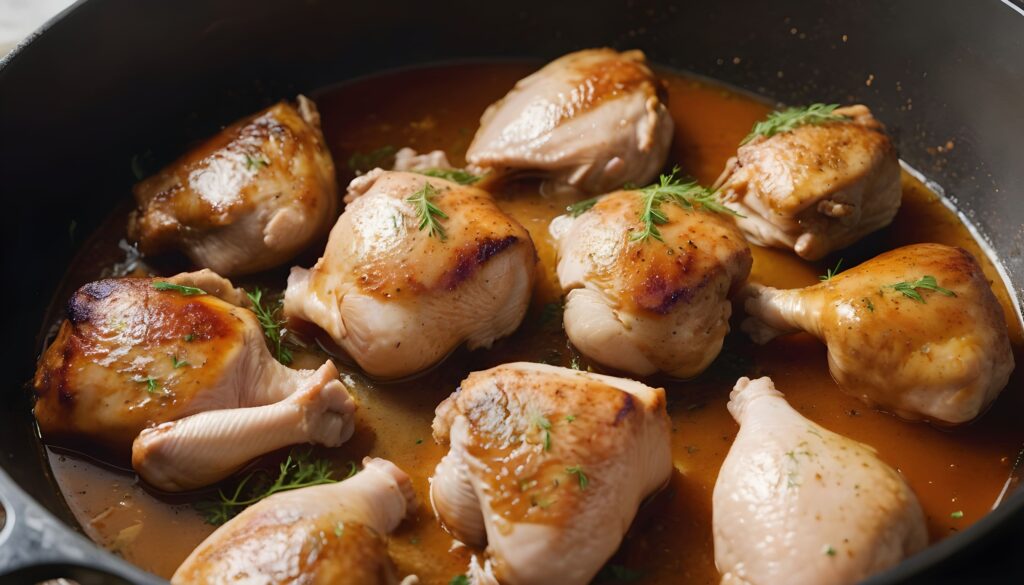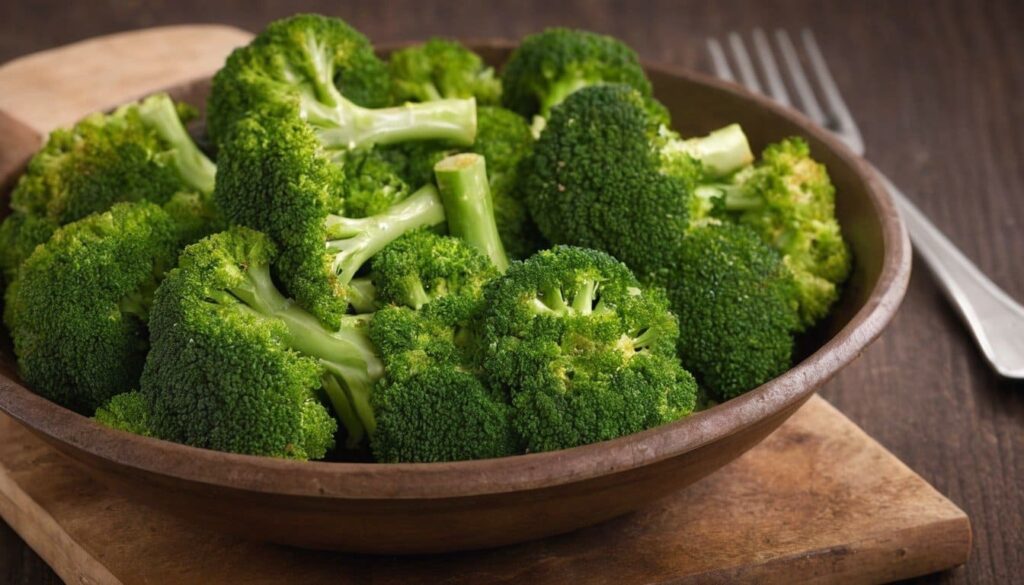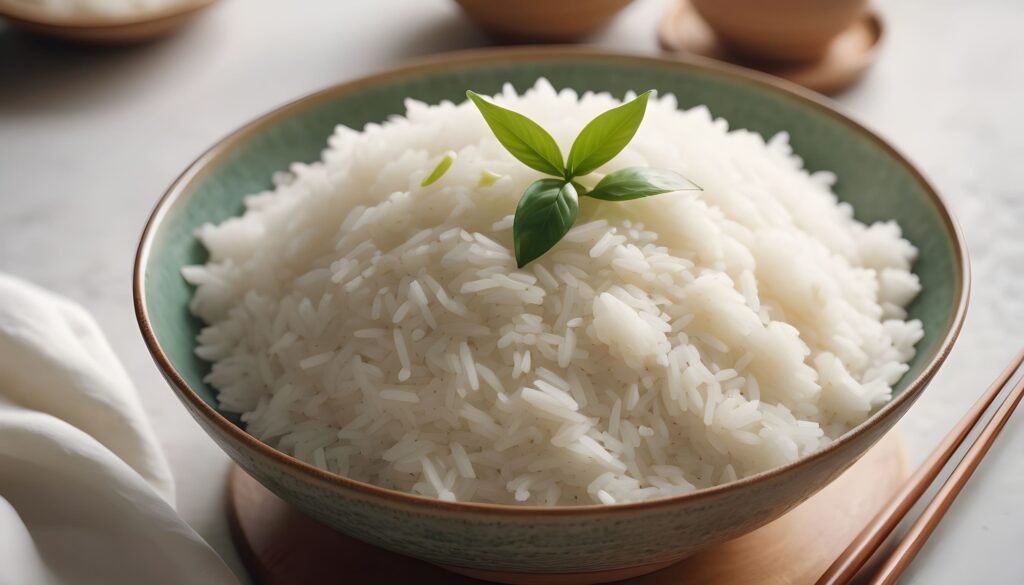
Unlock the Secret to Tender, Flavorful Chicken Thighs
Are you tired of dry, flavorless chicken thighs? Wondering how long to boil chicken thighs for that perfect texture and taste? Look no further! In this comprehensive guide, we’ll delve deep into the art of boiling chicken thighs to perfection. From cooking times to flavor enhancements, we’ve got you covered. So, grab your apron and let’s get cooking!
How to Cook Chicken Thighs?
Chicken thighs are a versatile and budget-friendly protein that can be cooked in a variety of ways. Boiling chicken thighs is a simple and foolproof method that results in tender, juicy meat every time. Here’s how to do it step-by-step:
- Prepare the Chicken Thighs: Start by rinsing the chicken thighs under cold water and patting them dry with paper towels. This helps remove any excess moisture and ensures a better sear.
- Season the Chicken Thighs: Season the chicken thighs generously with salt, pepper, and any other herbs or spices of your choice. This adds flavor to the meat and enhances its natural taste.
- Boil the Chicken Thighs: Fill a large pot with enough water to cover the chicken thighs completely. Bring the water to a boil over medium-high heat, then reduce the heat to low and simmer the chicken thighs for about 20-25 minutes, or until they are cooked through.
- Check for Doneness: To ensure that the chicken thighs are fully cooked, insert a meat thermometer into the thickest part of the meat. The internal temperature should read 165°F (75°C) when the chicken is done.
- Remove and Rest: Once the chicken thighs are cooked, remove them from the pot using tongs and let them rest on a plate for a few minutes before serving. This allows the juices to redistribute throughout the meat, resulting in a juicier and more flavorful end product.
How Long to Boil Chicken Thighs?
One of the most common questions when it comes to boiling chicken thighs is how long to cook them for. The answer depends on various factors, including the size of the thighs and whether they are bone-in or boneless. As a general rule of thumb, bone-in chicken thighs will take longer to cook than boneless ones. Here’s a rough guideline:
- Bone-In Chicken Thighs: Boil bone-in chicken thighs for approximately 25-30 minutes, or until they reach an internal temperature of 165°F (75°C).
- Boneless Chicken Thighs: Boneless chicken thighs will cook more quickly, usually in about 20-25 minutes.
It’s important to always use a meat thermometer to check for doneness, as cooking times can vary depending on factors such as the thickness of the meat and the altitude at which you’re cooking.
Is it Better to Boil or Fry Chicken Thighs?
When it comes to cooking chicken thighs, boiling and frying are two popular methods, each with its own advantages and disadvantages. Let’s take a closer look at the pros and cons of each:
- Boiling Chicken Thighs:
- Pros: Boiling is a healthy cooking method that preserves the natural juices of the chicken thighs. It’s also an easy and hands-off way to cook large batches of chicken.
- Cons: Boiled chicken thighs can be less flavorful than those cooked using other methods, such as frying or grilling.
- Frying Chicken Thighs:
- Pros: Frying chicken thighs results in crispy, golden-brown skin and juicy, tender meat. It’s a quick and delicious way to cook chicken.
- Cons: Frying requires more oil and can be messier than boiling. It’s also a higher-fat cooking method, which may not be suitable for those watching their calorie intake.
Ultimately, the best cooking method for chicken thighs depends on your personal preferences and dietary needs. If you’re looking for a healthier option, boiling may be the way to go. However, if you’re craving crispy, indulgent chicken, frying might be worth the extra effort.
Should I Boil Chicken Thighs Before Grilling?
Boiling chicken thighs before grilling is not necessary, but it can be a good way to ensure that the meat cooks evenly and stays moist on the grill. If you choose to boil your chicken thighs before grilling, follow these steps:
- Boil the Chicken Thighs: Bring a pot of water to a boil and add the chicken thighs. Boil them for about 10 minutes, then remove them from the water and pat them dry with paper towels.
- Season the Chicken Thighs: Season the chicken thighs with your favorite spices and marinades. This will add flavor to the meat and help it develop a delicious crust on the grill.
- Grill the Chicken Thighs: Preheat your grill to medium-high heat and place the chicken thighs directly on the grates. Grill them for 6-8 minutes per side, or until they are golden brown and cooked through.
By boiling the chicken thighs before grilling, you can ensure that they cook evenly and stay juicy, resulting in perfectly grilled chicken every time.
How Long to Cook Chicken Thighs in an Air Fryer
Air frying is a popular cooking method that allows you to enjoy crispy, delicious food with less oil and fewer calories than traditional frying. If you’re wondering how long to cook chicken thighs in an air fryer, here’s a simple recipe to try:
Ingredients:
- 4 bone-in, skin-on chicken thighs
- Salt and pepper, to taste
- Your favorite seasoning blend
Instructions:
- Preheat the Air Fryer: Preheat your air fryer to 360°F (182°C) for 3-5 minutes.
- Season the Chicken Thighs: Season the chicken thighs with salt, pepper, and your favorite seasoning blend. Make sure to coat the thighs evenly on all sides.
- Air Fry the Chicken Thighs: Place the seasoned chicken thighs in the air fryer basket, making sure not to overcrowd them. Cook them at 360°F (182°C) for 25-30 minutes, flipping halfway through, until they are golden brown and crispy.
- Check for Doneness: To ensure that the chicken thighs are cooked through, insert a meat thermometer into the thickest part of the meat. The internal temperature should read 165°F (75°C).
- Serve and Enjoy: Once the chicken thighs are cooked to perfection, remove them from the air fryer and let them rest for a few minutes before serving. Enjoy them hot with your favorite sides!
Air frying chicken thighs is a quick and easy way to enjoy crispy, flavorful chicken without all the extra calories and oil. Plus, it’s a healthier alternative to traditional frying, making it perfect for those looking to watch their waistline.
How Many Calories in a Boiled Chicken Thigh?
Chicken thighs are a delicious and nutritious source of protein, but how many calories are in a boiled chicken thigh? The exact number of calories can vary depending on factors such as the size of the thigh and whether it’s cooked with or without the skin. However, on average, a boiled chicken thigh with skin contains approximately 130-150 calories, while a boiled chicken thigh without skin has around 110-130 calories.
What Cooking Method is Best for Chicken Thighs?
When it comes to cooking chicken thighs, there are several methods to choose from, each with its own unique advantages. Some of the most popular cooking methods include boiling, frying, grilling, baking, and air frying. The best cooking method for chicken thighs depends on factors such as your personal preferences, dietary restrictions, and the desired end result. Here’s a brief overview of each method:
- Boiling: Boiling chicken thighs is a healthy and convenient cooking method that results in tender, juicy meat. It’s perfect for soups, stews, and other dishes that require shredded chicken.
- Frying: Frying chicken thighs produces crispy, golden-brown skin and juicy, tender meat. It’s a delicious way to enjoy chicken, but it can be higher in calories and fat than other cooking methods.
- Grilling: Grilling chicken thighs gives them a smoky flavor and beautiful grill marks. It’s a healthier option than frying and perfect for summer barbecues.
- Baking: Baking chicken thighs in the oven is an easy and hands-off cooking method that results in juicy, flavorful meat. It’s great for busy weeknights when you need a simple yet satisfying meal.
- Air Frying: Air frying chicken thighs is a healthier alternative to traditional frying that produces crispy, delicious results with less oil and fewer calories. It’s perfect for those looking to indulge without the guilt.
Ultimately, the best cooking method for chicken thighs is the one that suits your taste preferences and dietary needs. Experiment with different methods to find the one that works best for you!
Is it Better to Cook Chicken Thighs Fast or Slow?
When it comes to cooking chicken thighs, both fast and slow cooking methods have their advantages. Fast cooking methods, such as frying and grilling, are great for achieving crispy skin and sealing in juices quickly. On the other hand, slow cooking methods, like braising and roasting, allow the meat to cook low and slow, resulting in tender, melt-in-your-mouth chicken.
The best cooking method depends on factors such as your available time, desired flavor and texture, and the specific dish you’re preparing. For quick weeknight meals, fast cooking methods are ideal. However, if you have the time and patience, slow cooking methods can yield incredibly flavorful and tender chicken thighs that are worth the wait.
Should I Remove Skin from Chicken Thighs Before Boiling?
Whether or not to remove the skin from chicken thighs before boiling is a matter of personal preference. Some people prefer to leave the skin on to add flavor and moisture to the meat, while others prefer to remove it for a leaner, healthier option. Here are a few factors to consider:
- Flavor: Leaving the skin on while boiling can add flavor to the chicken thighs as the fat from the skin renders out into the cooking liquid. However, if you prefer a lighter taste, you may want to remove the skin.
- Texture: The skin can help keep the chicken thighs moist and juicy as they cook. If you’re worried about the meat drying out, leaving the skin on can help prevent this.
- Health Considerations: Chicken skin is high in fat and calories, so if you’re trying to watch your calorie intake or reduce your fat consumption, you may want to remove it before boiling.
Ultimately, whether or not to remove the skin is up to you. If you’re unsure, you can always try boiling chicken thighs both with and without the skin to see which you prefer.
How Do You Not Overcook Chicken Thighs?
Overcooking chicken thighs can result in dry, tough meat that lacks flavor. To avoid this, follow these tips:
- Use a Meat Thermometer: A meat thermometer is your best friend when it comes to cooking chicken thighs. Insert it into the thickest part of the meat to ensure it has reached an internal temperature of 165°F (75°C).
- Don’t Overcook: Once the chicken thighs reach the desired temperature, remove them from the heat immediately. Letting them cook for too long can cause them to dry out.
- Brine or Marinate: Brining or marinating the chicken thighs before cooking can help keep them moist and flavorful, even if they’re slightly overcooked.
- Rest the Meat: Let the chicken thighs rest for a few minutes after cooking to allow the juices to redistribute throughout the meat. This will help ensure that each bite is tender and juicy.
By following these tips, you can ensure that your chicken thighs are perfectly cooked every time, without the risk of overcooking.
How Do You Know if Chicken Thighs are Overcooked?
Overcooked chicken thighs are easy to spot if you know what to look for. Here are some signs that your chicken thighs may be overcooked:
- Dry Texture: Overcooked chicken thighs will have a dry, tough texture that lacks juiciness.
- Stringy Meat: When chicken thighs are overcooked, the meat can become stringy and fibrous, making it difficult to chew.
- Pale Color: Overcooked chicken thighs may have a pale, washed-out appearance, rather than a golden-brown color.
- Loss of Flavor: Overcooking can cause the natural flavors of the chicken thighs to become muted or bland.
If you notice any of these signs, your chicken thighs may be overcooked. However, don’t despair! You can still salvage them by shredding or chopping the meat and using it in soups, salads, or sandwiches where the dryness won’t be as noticeable.
What’s Healthier: Chicken Breast or Thigh?
When it comes to chicken, both breasts and thighs have their own nutritional benefits. Here’s a comparison of the two:
- Chicken Breast:
- Pros: Chicken breast is low in fat and calories, making it a popular choice for those watching their weight. It’s also high in protein and nutrients like vitamin B12 and selenium.
- Cons: Chicken breast can be dry and bland if not cooked properly, and it tends to be more expensive than other cuts of chicken.
- Chicken Thigh:
- Pros: Chicken thigh is higher in fat and calories than chicken breast, but it’s also more flavorful and juicy. It’s a great source of protein and essential nutrients like iron and zinc.
- Cons: Chicken thigh can be higher in saturated fat than chicken breast, which may not be suitable for those with certain dietary restrictions.
Ultimately, the healthiest choice depends on your individual dietary needs and preferences. Both chicken breast and thigh can be part of a balanced diet when enjoyed in moderation and prepared in a healthy way.
How to know when chicken thighs are done without a thermometer?
If you don’t have a meat thermometer on hand, you can still tell when chicken thighs are done by using visual and tactile cues. Here’s how:
- Check the Color: Cooked chicken thighs should have an opaque white color throughout, with no pink or raw areas remaining.
- Test the Texture: Press down on the chicken thighs with a fork or your finger. They should feel firm and springy, with no give or resistance.
- Check the Juices: Pierce the thickest part of the meat with a fork or knife. If the juices run clear and there are no traces of blood, the chicken thighs are likely done.
By using these methods, you can ensure that your chicken thighs are cooked to perfection, even without a meat thermometer.
How long to boil chicken thighs for dogs?
Boiling chicken thighs for dogs is a popular way to prepare homemade dog food. To ensure that the chicken thighs are safe for your furry friend to eat, boil them for at least 20-30 minutes, or until they are fully cooked through. Remove any excess fat and skin before serving, and always consult with your veterinarian before making any changes to your dog’s diet.
Master the Art of Boiling Chicken Thighs
Congratulations! You’ve now mastered the art of boiling chicken thighs to perfection. From cooking times to flavor enhancements, you have all the tools you need to create tender, flavorful chicken thighs that will impress even the pickiest eaters. So, whether you’re boiling them for soup, stew, or a simple weeknight dinner, you can cook with confidence knowing that your chicken thighs will turn out perfectly every time.
Thanks for reading this guide!
👋

